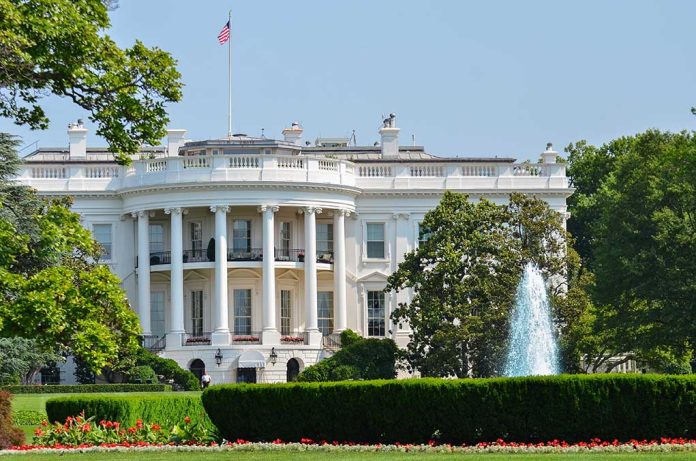
President Trump’s Liberation Day tariffs, set to take effect on April 2nd, promise to reshape the economic landscape with significant implications for U.S. trade and market stability.
Key Takeaways
- President Trump to introduce “Liberation Day Tariffs” on April 2nd to recalibrate trade relationships.
- The tariffs aim to reduce reliance on foreign goods and increase federal revenue.
- Economists express concerns over potential negative impacts on market stability.
- Tariffs include taxes on auto imports and other specific products.
- Countries like the EU and Canada plan retaliatory measures.
Introduction of Liberation Day Tariffs
President Trump is implementing tariffs referred to as “Liberation Day Tariffs” on April 2nd. This measure targets reducing dependence on foreign goods while attempting to match duties that other countries impose on U.S. products. Trump’s administration expects these tariffs to protect U.S. industries and generate substantial federal revenue.
However, financial experts are wary of the potential broad negative consequences. An expert in the field of financial advisory explains how these tariffs might impact the economy, highlighting that these measures could strain market stability. In doing so, they could increase import expenses and disrupt domestic industries.
Economic Implications of Tariffs
The tariffs will focus on various sectors, including the auto industry, with a new 25% tax on imported cars and auto parts. This action may lead to significant price increases, posing challenges for consumers and supply chains. “We’re gonna raise about $100 billion with the auto tariffs alone. What we’re gonna do is, in the new tax bill that has to pass, it absolutely has to pass, we’re going to provide tax benefits, tax credits to people who buy American cars,” Peter Navarro, an economist and a counselor to Donald Trump, said. Trump, however, shows indifference to these potential price hikes.
Additional targeted tariffs on products such as copper and lumber will likely result in increased costs for various industries. Countries affected by these tariffs, including the European Union and Canada, have pledged retaliatory measures to counteract potential economic detriments.
Conclusion and Future Perspectives
The Liberation Day tariffs present a multifaceted challenge for both domestic and international markets. While aimed at economic protectionism and revenue generation, they may strain the economy. Economists predict a possible rise in inflation and unemployment, which could hinder consumer spending and overall economic performance.
The future remains uncertain as these tariffs unfold, urging businesses, and individuals to consider strategic adjustments to mitigate potential risks. As Trump proceeds with his tariff policies, the global trade landscape faces an era of transformation and adaptation.
Sources
1. Trump has dubbed April 2 ‘Liberation Day’ for his tariffs. Here’s what to expect
2. President Trump’s ‘Liberation Day’ tariff plan sparks economic concerns









